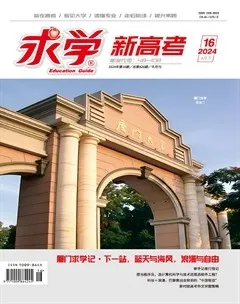如何成为残疾人的盟友?
The disabilities may not be physical or even visible: they could be learning, developmental or intellectual disabilities, or mental or chronic illness. But as common as disability is, not many people know how to talk about disability or how to interact with disabled people.
“To so many people, disability remains a mystery, a scary topic,” says disability rights activist and writer Emily Ladau. “But that’s not what we should do when it comes to disability, because it’s just something that’s part of what makes people who they are.” In her 2021 book Demystifying Disability: What to Know, What to Say, and How to be an Ally, Ladau shares thoughts on how nondisabled and disabled people can collectively make the world a more inclusive and accessible place.
“Language is one of the most important signals that we have to demonstrate our acceptance or rejection of a person’s identity,” says Ladau, a wheelchair user with multiple disabilities. In her book, she lists words that shouldn’t be used and offers terms that should be used instead.
Disability is a natural part of the human experience. There’s no singular experience of what it means to be disabled, and there’s certainly nothing inherently bad or shameful about being disabled or having a disability. So the words disabled or disability? Use them. They are not bad words.
Every person with a disability has a unique experience with their own disability. Within Ladau’s family, for instance, she, her mom and uncle have the same rare genetic disability. But for each of them, the disability manifests and impacts them differently. One person’s experience may inform another person’s, but no singular experience reflects that of the entire community.
“Allyship is not about simply holding the door for someone or using the correct words and then washing your hands off it, calling it a day and saying, ‘Hey, I was a good ally today,’” says Ladau. “To me, being an ally looks like asking yourself ‘Who’s at the table?’” says Ladau. “It’s a constant learning process and that can be challenging, but when we know better, we can do better.”
(材料选自NPR网站,有删改)
1. What problem do many people have?
A. They have problem knowing what is disability.
B. They have problem recognizing the type of disability.
C. They have problem communicating with the disabled.
D. They have problem giving suggestions to the disabled.
2. What can we learn about Ladau from Paragraph 2?
A. She has a positive mind.
B. She enjoys being disabled.
C. She anticipates to be a writer.
D. She likes giving others advice.
3. Why did Ladau suffer from disability?
A. She had a unique experience.
B. Her family had a rare genetic disease.
C. She had a very serious accident.
D. Her family had a terrible impact on her.
4. What can be inferred from the last paragraph?
A. It is good to hold a door for the disabled.
B. People need learning to be an ally of the disabled.
C. People need to challenge many things to be an ally.
D. It is better to keep some words about ally in minds.
1. C。解析:细节理解题。材料第一段的第二句提到“尽管残疾很常见,但很少有人知道如何谈论残疾或如何与残疾人互动”,C选项“他们和残疾人沟通有困难”与材料内容相符,故选C。
2. A。解析:推理判断题。根据材料第二段的“...because it’s just something that’s part of what makes people who they are.”和“Ladau shares thoughts on how nondisabled and disabled people can collectively make the world a more inclusive and accessible place.”,我们可知Ladau认为残疾是残疾人的一部人,她还写书跟读者分享自己的想法——正常人和残疾人该怎样共同打造相互包容和理解的世界。这说明Ladau是一个很乐观的人,A选项“她很乐观”与材料内容相符,故选A。
3. B。解析:细节理解题。材料第五段的第二句提到“例如,在Ladau的家庭中,她、她的母亲和舅舅都有同样罕见的遗传性残疾”,由此可知她的家族有一种罕见的遗传病,故选B。
4. B。解析:推理判断题。最后一段的最后一句提到“这是一个持续的学习过程,而且具有挑战性,但当我们知道得更全面时,我们就可以做得更好”,B选项“人们需要学会成为残疾人的盟友”与材料内容相符,故选B。

